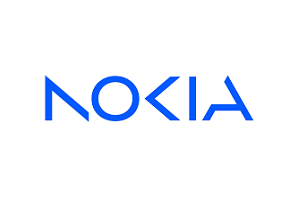Nokia, Qualcomm Technologies, Inc. and T-Mobile, announced that they have achieved a showcase of aggregating 5G Standalone (5G SA) spectrum using 5 Components Carrier (5CC) aggregation in sub-6 GHz spectrum. The trial aggregated 2 FDD and 3 TDD carriers resulting in peak downlink throughput speeds exceeding 4.2Gbps. 5G Carrier Aggregation with 5CC allows mobile operators to deliver higher data rates, more reliable connections and better coverage to even more customers.
The 5CC CA call was conducted on Nokia’s AirScale base station and a mobile test device powered by the new Snapdragon X75 5G Modem-RF System, the initial modem-RF solution to support 5G 5x carrier aggregation. During the test five component carriers on FDD bands n71 (600MHz) and n25 (1900MHz) and TDD bands n41 (2.5GHz) and n77 (3.7GHz) were aggregated. The uplink data rates were also accelerated with 5G uplink Carrier Aggregation on bands n25 and n77. The combination of uplink and downlink carrier aggregation allows operators to keep the uplink and downlink data rates in balance.
By aggregating carriers with 5CC, mobile network operators have more options to take advantage of their spectrum and network assets for superior user experience. With ongoing subscriber migration to 5G, network operators can tap into an increasing pool of 5G FDD frequency carriers and combine these with the bandwidth of multiple mid-band (TDD) carriers. 5CC CA unlocks this potential without compromising on coverage or capacity.
At MWC 2023, Nokia is showcasing its high-performance, high-capacity AirScale products and services portfolio including CA at its stand in Hall 3. Qualcomm Technologies will be showcasing the capability as part of a Snapdragon X75 video demonstration at its booth (Hall 3, 3E10).
“With Snapdragon X75, we enable the next generation of 5G smartphones and beyond to fuel the Connected Intelligent Edge,” says Sunil Patil, vice president product management, Qualcomm Technologies, Inc. “This world’s first 5 Component Carrier 5G Carrier Aggregation call on sub-6 GHz spectrum showcases the power of our modem-RF technology and underlines the power of our collaboration with Nokia to advance the 5G ecosystem.”
“We continue to work with industry leaders like Nokia and Qualcomm Technologies to bring America’s largest, fastest, and most reliable 5G network to the next level,” says Karri Kuoppamaki, SVP of network technology development and strategy, T-Mobile. These successful tests pave the way for even faster speeds so customers can unleash the full potential of their 5G devices. Innovation is at the heart of everything we do at T-Mobile and we make sure that our customers are always first to get the very best the industry has to offer.”
“Advanced mobile network operators are transitioning quickly to 5G SA. Multi-component carrier aggregation propels 5G SA data rates to Multi-Gigabit levels,” says Mark Atkinson, senior vice president, radio access networks PLM, Nokia. “With 5 Component Carrier 5G Carrier Aggregation software we enable our AirScale customers to provide highest 5G data rates at more locations to their subscribers. With this successful 5CC CA test we once again highlight our leadership position in providing the technologies that support mobile operators in maximising radio network and pushing them to the forefront of 5G.”
For more information visit the Nokia and Qualcomm booths at Mobile World Congress 2023 #MWC23 or visit Nokia or Qualcomm.
Comment on this article below or via Twitter: @VanillaPlus OR @jcvplus






